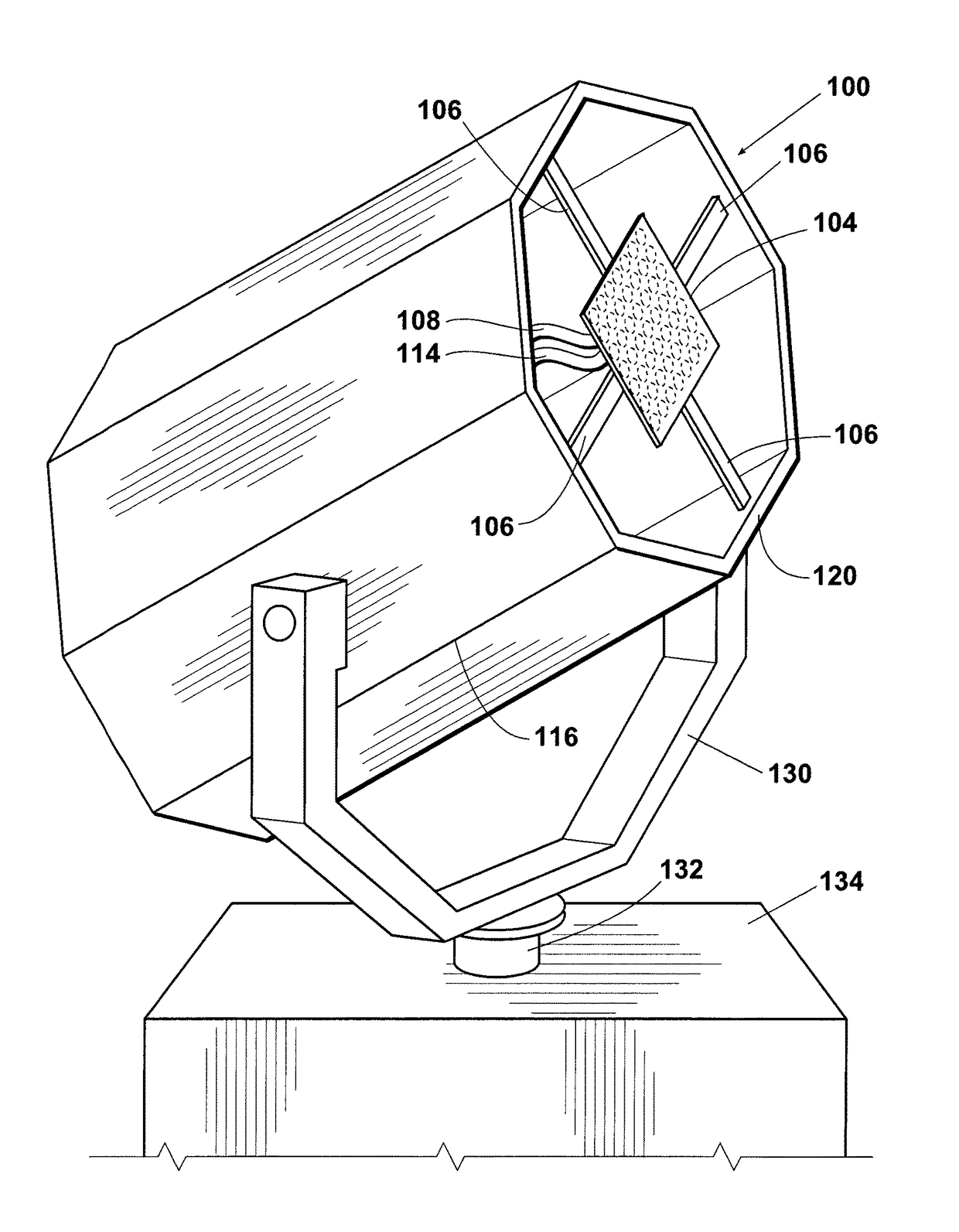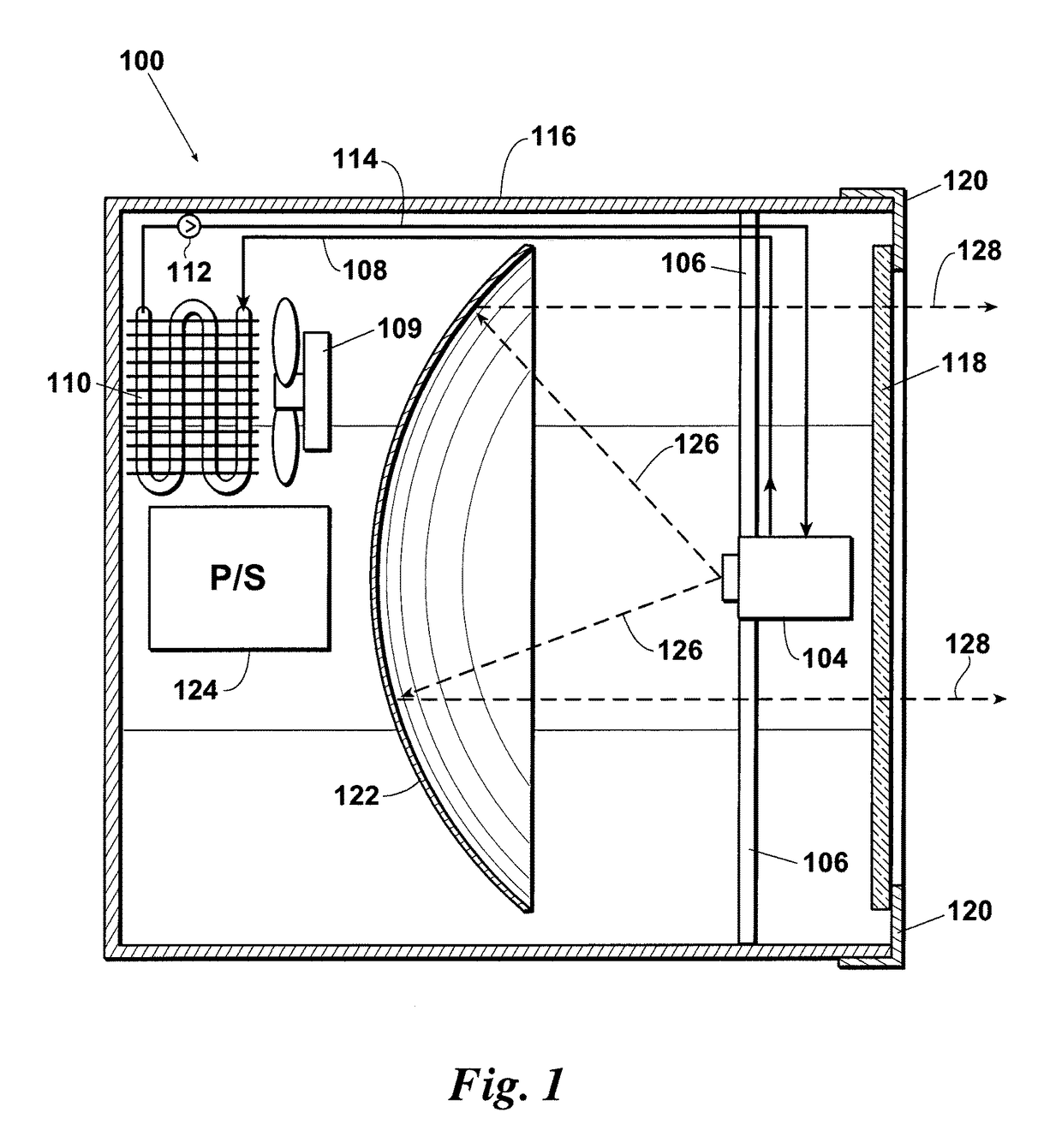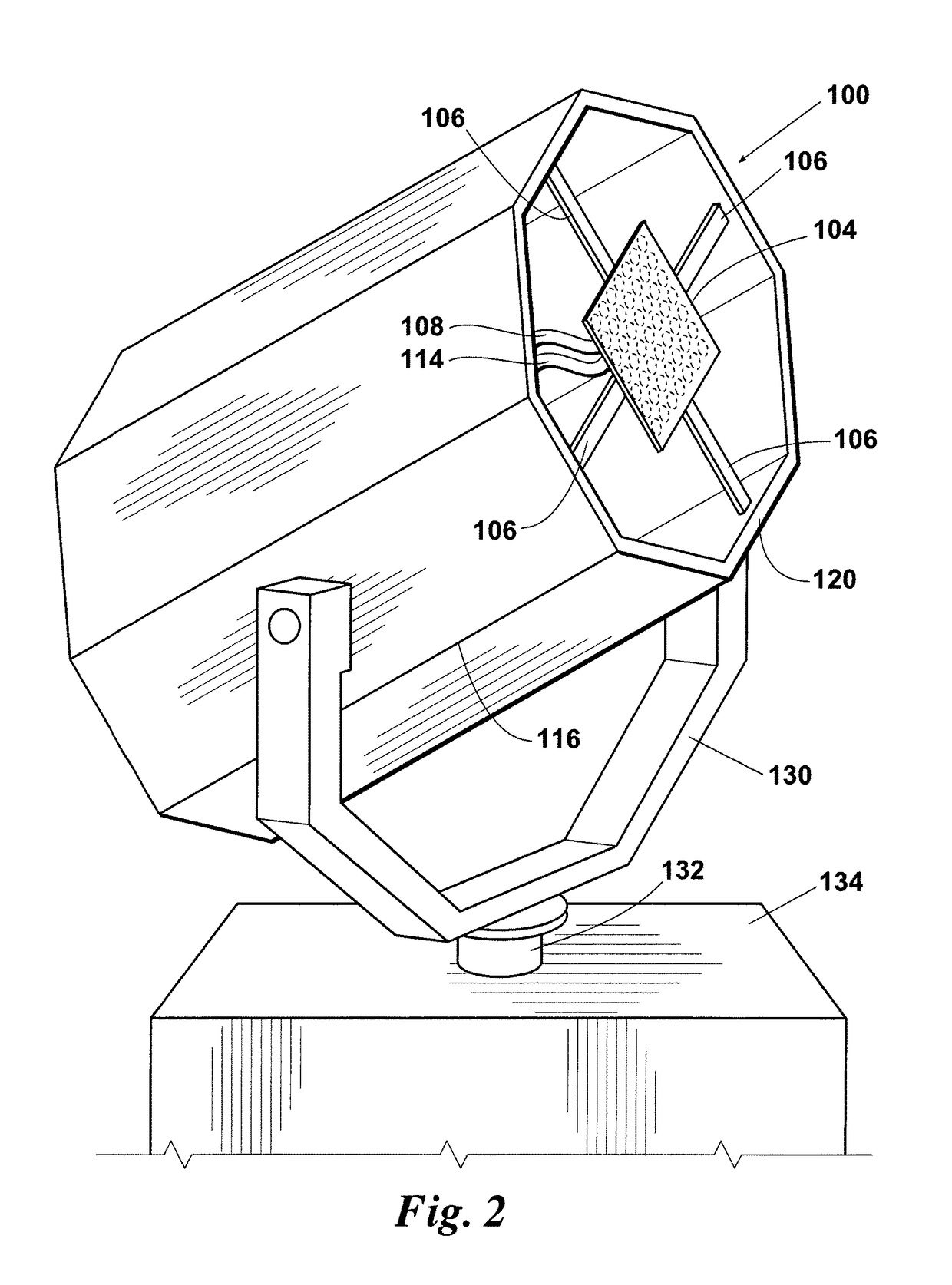LED based searchlight/sky light
a searchlight and led technology, applied in the field of searchlights, can solve the problems of short bulb life, easy over-use, and inability to completely stabilize the operation of the bulb, and achieve the effects of reducing costs, weight, and reducing light was
- Summary
- Abstract
- Description
- Claims
- Application Information
AI Technical Summary
Benefits of technology
Problems solved by technology
Method used
Image
Examples
Embodiment Construction
[0025]With reference to the figures, the LED based searchlight / sky light of the present disclosure 100 includes, in a basic preferred embodiment, a frame / housing 116 and an LED array 102 supported in / or by frame / housing 116. LED array 102 is preferably in thermal communication with a heatsink 104 so as to dissipate heat generated by the operation of LED array 102. In a preferred arrangement, LED array 102 is secured to heatsink 104 such that heatsink 104 is supported in and / or by frame / housing 116 by a plurality of support arms 106. A reflector 122 is also supported in and / or by frame / housing 116. In a preferred arrangement, reflector 122 is a parabolic reflector 122 and LED array 102 is positioned above reflector 102 a distance sufficient such that light emitted from LED array 102 is directed toward reflector 122 and reflected by reflector 122 in an intense collimated beam of light. This intense collimated beam can be projected outwardly from searchlight / sky light 100 so as to attr...
PUM
 Login to View More
Login to View More Abstract
Description
Claims
Application Information
 Login to View More
Login to View More - R&D
- Intellectual Property
- Life Sciences
- Materials
- Tech Scout
- Unparalleled Data Quality
- Higher Quality Content
- 60% Fewer Hallucinations
Browse by: Latest US Patents, China's latest patents, Technical Efficacy Thesaurus, Application Domain, Technology Topic, Popular Technical Reports.
© 2025 PatSnap. All rights reserved.Legal|Privacy policy|Modern Slavery Act Transparency Statement|Sitemap|About US| Contact US: help@patsnap.com



